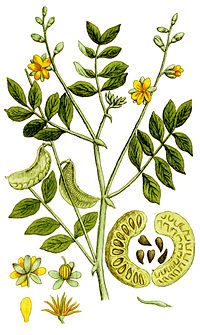
Photo from wikipedia
A synoptic review of plant disease epidemics and outbreaks was made using two complementary approaches. The first approach involved reviewing scientific literature published in 2021; the second approach involved retrieving… Click to show full abstract
A synoptic review of plant disease epidemics and outbreaks was made using two complementary approaches. The first approach involved reviewing scientific literature published in 2021; the second approach involved retrieving new records added in 2021 to the CABI Distribution Database. The literature review retrieved 186 articles, describing studies in 62 categories (pathogen species/species complexes) across >40 host species on 6 continents. Pathogen species with >5 articles were: Bursaphelenchus xylophilus, Candidatus Liberibacter asiaticus, cassava mosaic viruses, citrus tristeza virus, Erwinia amylovora, Fusarium spp. complexes, Fusarium oxysporum f. sp. cubense, Magnaporthe oryzae, maize lethal necrosis co-infecting viruses, Meloidogyne spp. complexes, Pseudomonas syringae pvs, Puccinia striiformis f. sp. tritici, Xylella fastidiosa, and Zymoseptoria tritici. Automated searches of the CABI Distribution Database identified 617 distribution records new in 2021 of 283 plant pathogens. A further manual review of these records confirmed 15 pathogens reported in new locations: apple hammerhead viroid, apple rubbery wood viruses, Aphelenchoides besseyi, Biscogniauxia mediterranea, Ca. Liberibacter asiaticus, citrus tristeza virus, Colletotrichum siamense, cucurbit chlorotic yellows virus, Erwinia rhapontici, Erysiphe corylacearum, Fusarium oxysporum f. sp. cubense Tropical Race 4, Globodera rostochiensis, Nothophoma quercina, potato spindle tuber viroid, and tomato brown rugose fruit virus. Of these, 4 pathogens had at least 25% of all records reported in 2021. We assessed two of these pathogens - tomato brown rugose fruit virus and cucurbit chlorotic yellows virus - to be actively emerging in/spreading to new locations. In general our dual approaches revealed distinct sets of plant disease outbreaks and new records, with little overlap.
Journal Title: Phytopathology
Year Published: 2023
Link to full text (if available)
Share on Social Media: Sign Up to like & get
recommendations!